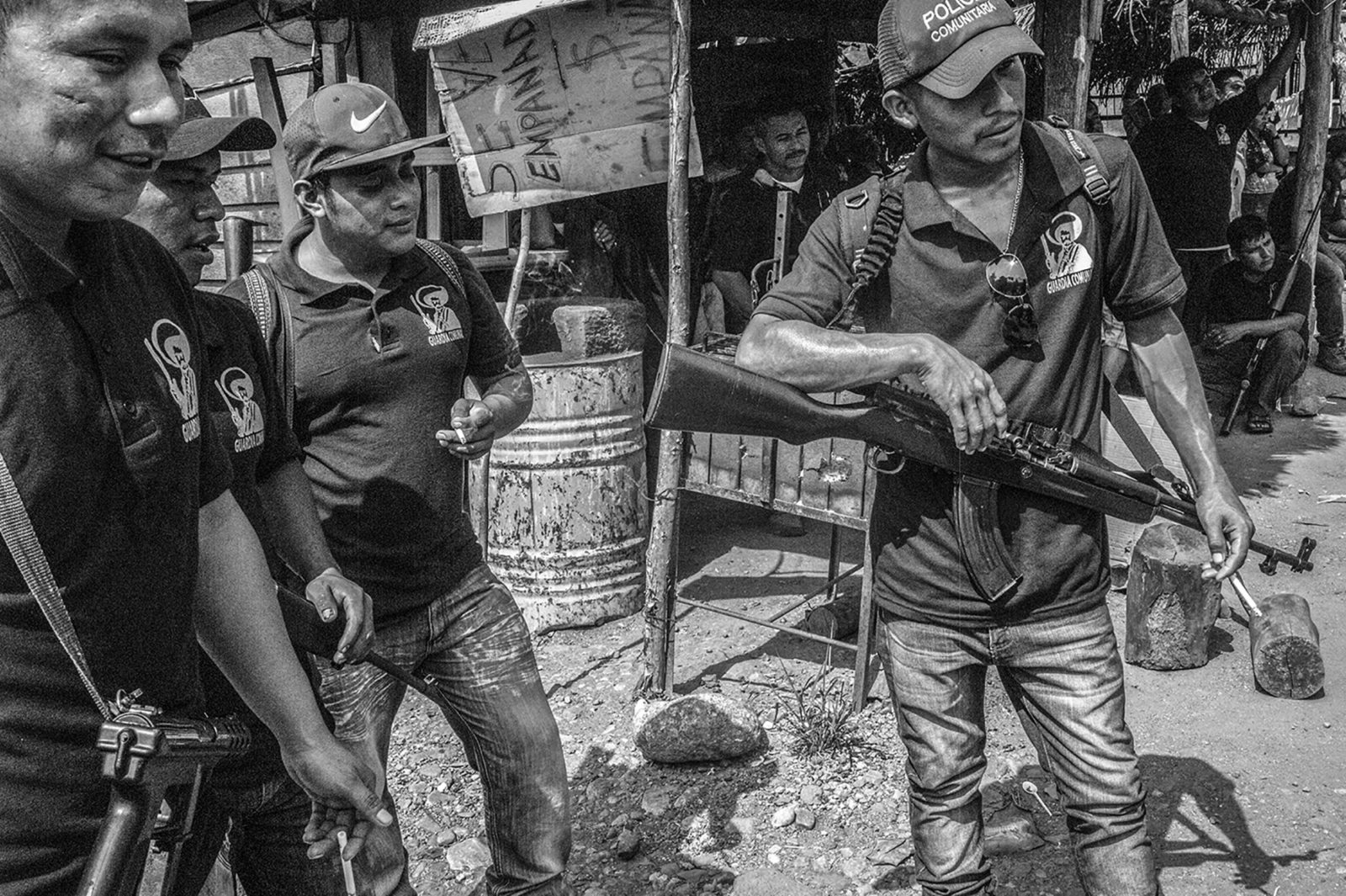
By Conor Risch
This image from Scott Brennan’s project, “Indigenous Autonomy in Mexico: Towards a Renewal of Revolutionary Ideals,” is compelling because it evokes two competing impressions. It’s an image of pride and strength that also reinforces the depth of the challenge the community of Santa Maria de Ostula faces in it’s effort to maintain its autonomy in Mexico’s Michoacan State. As Brennan reveals in his text about the project, Ostula is one of a number of communities of “ethnically and culturally indigenous peoples” in Mexico that have established “autonomous, grassroots governments in response to rampant violence, corruption, environmental degradation and inadequate official governments.”
We know from Brennan’s caption that these men are members of a local security force and that they guard the perimeter of their town from members of organized crime and other threats. The guards appear to be absorbed in conversation and at ease. Their uniform shirts sugges they are organized, and there’s something proud about the way they carry and present themselves. We can just make out other members of the security forces in the background, making us wonder how many are in their force. Brennan also tells us that many of the weapons used by the security forces were taken from criminals who were “kicked out of this area as the movement began.” While it’s not a peaceful image, it can be read as a hopeful one.
Yet their surroundings, mismatched hats and other cues point to their limited resources. How can a local population successfully maintain peace and defend their community, their land and their heritage from better-funded and better-equipped political or criminal forces? Seen in that light, their efforts seem all the more admirable.
Conor Risch is a Seattle-based writer and senior editor of Photo District News (PDN). Follow him on Twitter @c_risch.